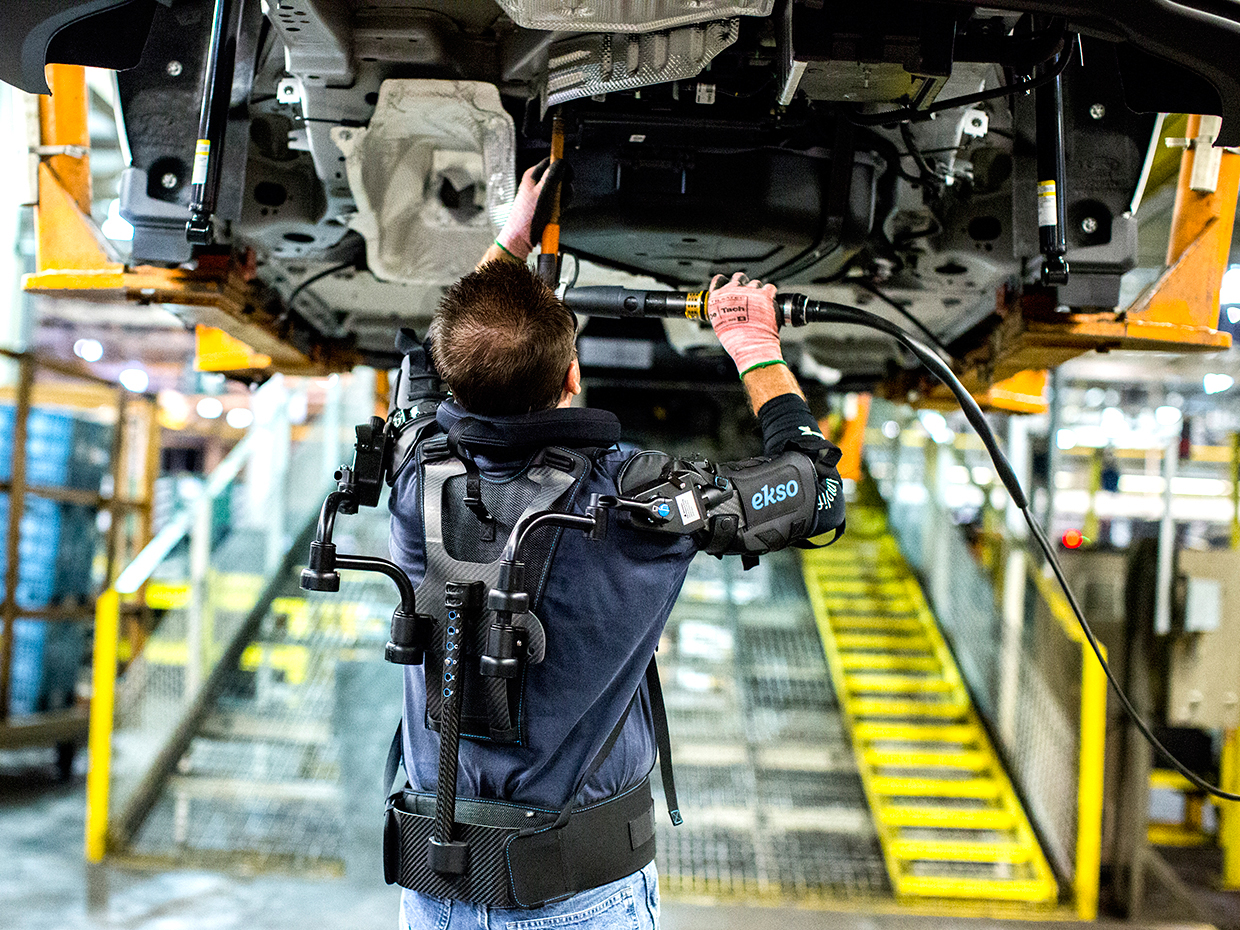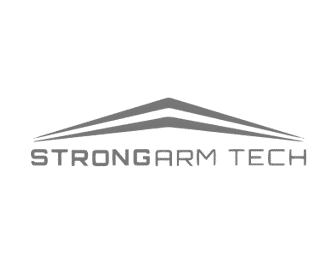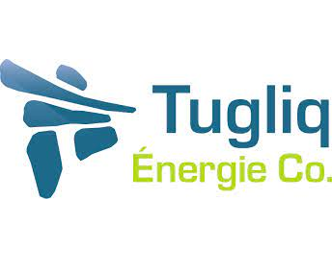
Behind the concept of the autonomous car lies 6 levels of automation ranging from 0 (classic car) to 5 (fully autonomous). Today, most commercially available vehicles are at most level 2: partial automation. At level 3, the vehicle can take full control of driving in certain situations (such as in traffic jams) — these vehicles are just coming to market.
Over the past decade, there has been much hope that automated cars would arrive in the near future, but now this prospect seems more remote, with the sale of Uber’s self-driving department 6 months ago not boding well for the industry in the short term. So what went wrong? What are the issues that the carmakers’ $120Bn investment over two years could not solve?
Part of the answer lies in the myriad of potential situations one may encounter while driving. Autonomous cars work well in controlled environments, but to achieve level 4 or 5 autonomy, i.e. letting go of the steering wheel for most of the journey, they need to be fully prepared for any situation (e.g. snow covering road markings, areas with no coverage, street lighting malfunctioning, jaywalking pedestrians, etc.). Thus, training artificial intelligence is essential for its public adoption, which is what OEMs, startups and Tier-1s are doing.
Training of algorithms for the multiplicity of situations
One step towards fully autonomous driving is to assess the safety of the AI driving model and highlight its blind spots to improve training on these cases. Startups such as Phantasma Labs have developed a virtual testing environment to assess the model’s behavior when confronted with Vulnerable Road Users (VRUs) such as pedestrians or cyclists. The model is faced with millions of situations involving machine learning-based VRUs in order to study the driving and address the mishandled situations. Other unexpected objects can disrupt driving. If traffic signs, stands, barriers, or excavators on the road seem straightforward to avoid for a human driver, it is more difficult for AI that has never encountered it before. Deep Safety offers annotated datasets dedicated to training models for the construction or road work industry. Its own trained AI identifies unknown objects encountered, raising an alert for the driver to take over. To evaluate the general safety of a model’s driving skills, Ivex proposes a safety assessment tool that provides KPIs on the safety of trajectories taken by the autonomous driving system, either in simulation or on real driving data, to spot potential improvements.
Drawing on as much data as possible
It seems unlikely that traditional cars will disappear in the near future and the behaviour of human drivers is harder to predict than that of driverless cars. Startups are also addressing the subject by connecting traditional and driverless cars. Valerann builds road sensors that gather information for autonomous vehicles about their in-lane location, even when the markings are not visible. They also connect classic cars to driverless vehicles by sharing their exact location and predicted trajectory, spotting abnormal driving behavior, and warning surrounding cars of danger. Eyenet offers collision prediction software based on GPS data from phones and AI that could be used to connect regular vehicles to autonomous ones and detect and prevent potential collisions. All this information is very valuable. The more accurate real-time data the model has, the easier it is to make the right decision.
React as quickly as possible
Training more complex models, fed by more information and capable of handling a wider range of situations, comes at a price. In the case of autonomous vehicles, every millisecond counts in the decision-making process, which puts great pressure on the data transmission process as well as on the computational power that can be installed in the car. Regarding data transmission, 5G and smart cities will have a great role to play, and the technology is on its way. When it comes to enhancing the car’s computational performance, edge computing seems to be the most promising answer. Unlike cloud computing, where calculations are performed on a remote server, far from the data, edge computing solutions offer calculations in microdata centers, relatively close to the car. This proximity tackles two problems: firstly, for autonomous cars, lag would have disastrous consequences and the lagging risk in communication is reduced when the data is sent to a closer location. Secondly, privacy is increased and the hacking risk is reduced as the data arrives in a smaller, more controlled environment than the cloud. Vapor.io provides microdata centers designed for edge computing that could be used for autonomous vehicles. Quadric.io is developing edge computing processors optimized for real-time calculation that will allow deeper models to be run. AlphaIcs has also developed its Real AI Processor (RAP), an edge computing solution designed for heavy AI applications like real-time automated driving. Together, these solutions address the trade-off between computing power and network latency for autonomous cars.
Startups appear to be leading the way in fully autonomous car innovation, thanks to massive funding from OEMs: Toyota and Aurora announced a partnership 4 months ago to produce mass autonomous vehicles for ride-hailing networks like Uber. Last year, Jaguar Land Rover partnered with Waymo to develop Waymo’s driverless fleet, and Volkswagen invested $1 billion in Argo’s self-driving technology and its Autonomous Intelligent Driving department became part of Argo.
It is difficult to assess when, or even if, autonomous vehicles will be the most represented on the road of the future, but applications are definitely emerging be it for ridesharing, trucking, or deliveries, market leaders are investing and technology is going forward.
2 Key Figures
129 self-driving car startups
registered by Tracxn
Global autonomous car market expected to reach $1,642 Bn by 2025
The global autonomous car market was estimated at $818.6 Bn in 2019 and is expected to reach $1,642 Bn by 2025, at a CAGR of 17.4%
3 startups to draw inspiration from
This week, we identified three startups that we can draw inspiration from: Phantasma Labs, Quadric.io and Eyenet.

Phantasma Labs
Founded in 2018, Phantasma Labs is a Berlin based startup that developed artificial intelligence-based massive simulations designed to improve self-driving automobiles. The company’s platform generates a substantial amount of data-sets related to real-life situations at scale for self-driving cars, models the behavior of pedestrians, cyclists and other road users in large-scale simulations in virtual scenarios, enabling autonomous vehicle makers to learn from real-life situations without the consequences of accidents.

Quadric.io
Based in California, Quadic.io developed an edge processor designed to meet the needs of next-generation autonomous products, Industrial IoT products, and robots. The company’s processors can be incorporated into a wide range of products that require instantaneous processing of real-world data streams with minimal power and maximum speed as well as commute safely, industrial robots to complete critical tasks and create human interaction with machines, enabling developers to empower with tools to create tomorrow’s technology today.

Eyenet
Created in 2018, Eyenet developed a collision prediction and prevention software-based platform designed to addresses safety challenges in the shared mobility landscape. The company’s platform incorporates AI-powered algorithms that calculates user location and collision probability as well as utilizes a sophisticated probability analysis for spatial cross-correlation of bearing, velocity and acceleration to determine an imminent collision.
123Fab #50
1 topic, 2 key figures, 3 startups to draw inspiration from

Sustainability initiatives have grown exponentially in recent years, in public and private companies alike. This trend has been further reinforced by the pandemic, highlighting that sustainability is no longer a top-down discretionary topic, but a bottom-up business imperative. There is a real challenge to engage all stakeholders in this common goal, employees first. At the same time, stakeholders are increasingly voicing their expectations, be they clients, suppliers, regulators or employees, pushing for greater integration of green practices across businesses. The driving forces are therefore twofold.
In response, a fairly recent model has emerged in academic research: green human resources management (GHRM). Beyond the buzzword that may be used, GHRM refers to the policies, practices and systems that are used to incorporate green objectives throughout the HRM process, namely recruitment, training, development and compensation. Human resource departments are instrumental to the fulfillment of environmental objectives, if only by creating a sustainability culture within the company that encourages the emergence of individual initiatives.
Recruitment
While building a strong employment brand has always been essential to attract and retain high-quality talent, building a green employer reputation is even more so. And this is especially beneficial as employees serve as frontline agents for more sustainable business operations. In 2011, engineers at semiconductor chip-maker Intel devised a new chemical process that reduced chemical waste by 900,000 gallons, saving $45 million annually. Similarly, PG Tips employees reduced millimeters off a teabag, saving 9.3 tonnes of paper. As a result, a plethora of corporates (e.g. Google, Timberland, and General Electric) are reaping the benefits of positioning their organizations and recruitment processes in favor of green-minded candidates.
Onboarding, training and development
While recruiting mission-minded individuals is a great lever, instilling further awareness and values by the way of targeted training and development workshops can also contribute to the GHRM effort. Last September, BBVA announced the launch of sustainability training for its 125,000 employees worldwide. Tailored to the different departments, the training session covers climate change and the direct and indirect impacts arising from the environmental risks of BBVA’s activities. Among the various HR components, it is undeniably in the onboarding and training segment that most startups are emerging. Alongside consultancies and associations (e.g. La Fresque du Climat), startups are designing workshops to infuse best practices in their future employees. Energic, a French startup, is an example. They organize sustainability challenges for companies in order to raise awareness around sustainability issues. At Aster Fab, along with other players, we run a training course named INVEEST to help industrial and financial players master the financing levers for energy transition projects.
Performance management and compensation
Another way to bolster employee engagement is to include sustainability objectives into performance reports. Intel was among the pioneers in this field. Environmental metrics have been part of their compensation plan since 2008. Other companies have put in place similar programmes since, such as Danone, Alcoa, Xcel Energy, etc.
Engaging employees to help a business operate sustainably is becoming all the more essential as younger generations expand their presence in workforces and push sustainability to the head of corporate agendas. If startups are flourishing in the field of carbon measurement, reduction and offsetting (see our 123Fab #42), very few are tackling the GHRM market at the moment. A French startup, CitizenWave, is one of the few to do so. With its collaborative SaaS solution, it strives to engage employees in an eco-responsible approach based on collective intelligence. Other solutions help companies encourage their employees to act at their own level: sustainable mobility credit cards (Betterway), carpooling solutions (Kinto, Karos), donation platforms (Alaya), etc.
In short, the GHRM market for startups is very immature despite the vast employee engagement market. While training to educate and raise awareness around environmental best practices is becoming commonplace in most large corporates, as well as gamification and nudging, very few initiatives revolve around the other HR components. Yet the climate emergency is such that we can predict that companies will need to equip themselves with tools to engage and track the actions of their employees to meet their own targets. The handful of startups that are positioning themselves on the topic is a weak signal of this trend.
2 Key Figures
1,775 employee engagement startups
registered by Tracxn
Global HR management market expected to reach $34.7 Bn by 2027
The global HR management market was estimated at $16 Bn in 2020 and is expected to reach $34.7 Bn by 2027, at a CAGR of 11.7%.
3 startups to draw inspiration from
This week, we identified three startups that we can draw inspiration from: Energic, CitizenWave and Alaya.

Energic
Energic is a French startup that organizes sustainability challenges for companies, schools and local communities to raise awareness.

CitizenWave
CitizenWave is a French startup that has developed a SaaS solution to engage employees to take green action. Using its mobile application and analytics platform, it is helping companies transform themselves quicker building upon collective intelligence.

Alaya
Alaya is a Swiss startup that has developed an ’employee purpose platform’ to empower companies to build a purpose-driven culture and engage employees to make an impact, one act at a time (volunteering, giving, biking to work, saving energy, etc.)
123Fab #49
1 topic, 2 key figures, 3 startups to draw inspiration from

In May 2021, Barbara Pompili, the French Minister of the Ecological Transition, announced the selection of 215 startups and SMEs for the GreenTech Innovation label, among which 45 are solutions for more sustainable buildings and better energy efficiency. These startups will be supported by the government for their development and commercialization. This is one example out of many government initiatives to boost the building energy efficiency and renovation market.
The International Energy Agency estimates that the building sector is responsible for 42% of global electricity consumption. Energy efficiency is about performing the same tasks with less energy. Buildings can go down to net-zero energy consumption which means that the total amount of energy used equals the amount of renewable energy created on-site or by off-site renewable sources. As most of the energy used in buildings is for maintaining a comfortable temperature (heating or cooling) and good ventilation, effective thermal insulation has a major impact on energy consumption. Thus, in the context of global efforts to reduce energy consumption and reach the 2050 net-zero target, buildings’ energy efficiency is more than necessary. To achieve it, most of the efforts need to focus on renovating and retrofitting existing buildings, rather than new performant ones, as they will represent more than 90% of 2050’s properties. It has ecological and economic benefits as it reduces the amount of energy consumed (and associated GHG emissions) while lowering the energy bill for the occupants. The top priority are the « thermal strainers » which are the buildings with the worst energy efficiency, where cold enters in the winter and heat enters in the summer. In France, they correspond to the buildings with an energy consumption above 330 kWh /sqm /year, which are ranked F or G. There are three main thermal losses. The surfaces (roof, walls, windows, ground floor) between the interior and exterior account for up to 80% of energy loss. Then, the controlled mechanical ventilation and ventilation grilles, which ensure the renewal of indoor air, make up to 20% to 25% of energy loss. Finally, the thermal bridges, which are points in construction where the insulation barrier is interrupted, contribute to 5% to 10% of heat loss. Thus, efforts should be put on external cladding and filling the thermal bridges to retrofit the existing buildings.
Different types of innovative solutions exist to improve buildings’ energy efficiency:
- Measure: Many sensors and IoT technologies have been developed to compute more accurately buildings’ energy consumption. French start-up Smart Impulse, for instance, has developed a smart meter to measure the electricity consumption of buildings by usage (lighting, IT, heating, etc.) which gives insights on potential energy savings.
- Retrofit: Picking the right materials highly contributes to buildings’ efficiency. New technologies have been developed to avoid energy loss, such as the thermal reflective resin for roofs of the start-up Cool Roof. Their solution aims to return roughly 90% of the solar heat. It protects the roof from physical damage while maintaining a comfortable temperature inside the building. Moreover, the Dutch EnergieSprong approach is being deployed in France, UK, and Germany for a quick and affordable retrofit of the existing buildings into zero-energy ones.
- Optimize: There are more and more integrated energy management systems that measure and autonomously regulate energy consumption. Thanks to numerous sensors and IoT devices, the American start-up Budderfly provides a solution optimizing entire buildings’ energy consumption.
Although these solutions are very promising, some challenges still have to be overcome. First, renovation takes time obtaining the required permits for structural renovations, finding the right partners, and performing it. Then, even if some startups and companies are offering affordable solutions, it remains costly and often requires important initial investments. All the more so as energy-efficiency goals are often secondary to economic considerations and are not taken into account in the property’s life-cycle costs. Another barrier is the fragmentation of the construction industry, which involves many different actors and stakeholders who have varied interests. Finally, the diversity of the social and regulatory contexts – within the EU for instance – makes it hard to scale solutions.
However, most countries are addressing this issue and implementing associated regulations, incentives, and climate change targets. In France, the government has put in place financial support for buildings renovation but also biding policies like the interdiction from 2028 to rent a flat or house with an energy performance rated F or G. In 2021, the French government announced 6.6 million euros for buildings’ energy renovation over 2 years in their economic recovery plan. Another example of an efficient policy in California where homes and buildings are relatively energy-efficient today. Since 1975, the California Public Utility Commission has directed the investor-owned utilities to commit over $US 5 billion to energy efficiency programs, 85% of which has been targeted at retrofit energy efficiency investments in existing buildings. For instance, Netflix has equipped its headquarters in Los Gatos with View dynamic glass, which controls how much light gets in and contributes to saving up to 20% of energy costs.
To conclude, there are a lot of startups that have spotted an opportunity in improving buildings’ energy efficiency, whether it is with hardware and high-tech materials or smart software. The market is far from being addressed, and governments are multiplying incentives to do so, which is very promising as soon as people are willing to make the investment.
2 Key Figures
637 building energy efficiency & management startups
registered by Tracxn
Global efficient building market expected to reach $253 Bn by 2027
The global efficient building market was estimated at $146 Bn in 2020 and is expected to reach $253 Bn by 2027, at a CAGR of 8.15%.
3 startups to draw inspiration from
This week, we identified three startups that we can draw inspiration from: Sensor Flow, View, and 75 Fahrenheit.

SensorFlox
SensorFlow is a Singapore-based start-up that develops room automation and energy management systems focussed on the hospitality sector. Its solution helps automate a building to optimize energy consumption. It includes occupancy sensors, smart thermostats, door sensors, and split unit thermostats.

View
View is a Californian start-up that has created a glass solution that increases and optimizes the amount of natural light in buildings while simultaneously improving energy efficiency, and advancing smart and connected buildings.

75 Fahrenheit
75F is a US-based start-up making smart building automation affordable and easy to deploy. 75F leverages IoT, Cloud Computing and Machine Learning for data-driven building intelligence and controls for HVAC, lighting and energy optimization.
123Fab #48
1 topic, 2 key figures, 3 startups to draw inspiration from

While many of the early exoskeletons were focused on military and medical applications, in recent years there has been an increase of new use cases due to decreasing costs. Exoskeletons are being used in a range of industries from manufacturing and construction to agriculture. BMW, Honda and Hyundai use them in the automotive industry; Samsung, Panasonic, Mitsubishi and Siemens in electronics; and Geodis, Pon and AT in logistics and shipping.
According to ASTM International, exoskeletons can be defined as wearable devices that work in tandem with the user. They are different from autonomous robots in that they don’t work in place of the blue-collar worker. They are placed on their body and act as amplifiers that augment, reinforce or restore human performance, as opposed to mechanical prosthetics, such as a robotic arm or leg, that replace original body parts.
The global exoskeleton market can be segmented on the basis of two main criteria. On the basis of extremity, the market can be divided into lower extremity, upper extremity and full-body. In terms of product, the market can be classified into two categories:
- Powered exoskeletons — they use batteries or electric cable connections to run sensors and actuators
- Passive exoskeletons — they do not have any electrical power source and can be used for weight distribution, energy capture, locking, etc.
In recent years, exoskeletons have emerged in industries that are less amenable to automation. For example, industries such as construction or oil and gas, which operate in unstructured environments, or manufacturing industries that produce a wide variety of parts of different shapes and sizes. In these industries, blue-collar workers handle the most complicated tasks, resulting in wear-and-tear experiences. While some repetitive tasks have been handed over to autonomous robots, exoskeletons fill the automation gap for non-repetitive and hazardous tasks by allowing workers to perform strenuous tasks safely and efficiently. The EksoZeoG developed by Ekso Bionics, for example, helps construction workers use heavy hand tools by bearing the weight of the heavy equipment.
Advances in enabling technologies (actuators, batteries, advanced materials, etc.) have reduced the costs and increased the functionality of exoskeletons in recent years, but they still represent a significant investment. While the price varies between passive and active exoskeletons, full-body, lower and upper, the average exoskeleton costs several thousand dollars. Given the significant cost, a handful of startups have sought to lower the barrier to adoption via more innovative business models. The concept of Robotics-as-a-Service (RaaS) is gaining ground. Sarcos, which is one of its proponents, allow customers to shift their CAPEX to OPEX, and thus deploy solutions without upfront costs. Based on its research, Sarcos’ customers perceive other benefits to RaaS, such as the elimination of technology risk and the absence of maintenance costs. Other startups are looking to democratize the use of exoskeletons, especially passive ones that are less expensive. With the help of crowdfunding, French startup HMT wants to use a low-cost model to sell its products at €200.
While the market is still looking for an accurate combination of hardware, the competition to make the best, powered exoskeleton is slowly shifting from a race for the best hardware to a race for the best software. In this sense, the industry can be compared to the semiconductor industry in the late 2000s with wafer handlers. The robots all managed to move a wafer from A to B, regardless of the hardware, but it turned out that it was the software that made the difference. The winners were the ones with the best software and the most reliable architecture with less downtime. Today, exoskeleton research is moving in this direction and increasingly focusing on complex software. It seeks to develop more intelligent exoskeletons, via features such as balance control or energy transfer optimization. The BioMot project, based at the Human Locomotion Laboratory in Madrid, is a weak signal of this shift. They are trying to develop more wearable equipment, that is lightweight and compact, and which is especially better able to anticipate and detect the intended movements of the worker. Through dynamic sensorimotor interactions, the exoskeletons have real-time adaptability and flexibility, increasing the symbiosis between the wearable and the user. Such projects pave the way to a new generation of lighter and smarter exoskeletons.
In short, the future of industrial exoskeletons looks bright. Barriers to adoption are expected to further decrease as costs drop and lightweight exoskeletons are increasingly developed. Regulation should also emerge, as evidenced by ASTM International’s creation of an exoskeleton and exosuit committee in 2017 to define international standards. Just as it is illegal to walk in construction areas without the proper PPE, it may one day be illegal for blue-collar workers on construction sites, in warehouses and manufacturing plants to use tools without the adequate exoskeleton. What’s more, advances in materials, battery and actuator technologies suggest that new applications are in the offing, which should boost adoption even further.
2 Key Figures
129 exoskeleton startups
registered by Tracxn
Global exoskeleton market expected to reach $5.7Bn by 2027
The global exoskeleton market was estimated at $310M in 2019 and is expected to reach $5.7B by 2027, at a CAGR of 43.4%
3 startups to draw inspiration from
This week, we identified three startups that we can draw inspiration from: Laevo, Noonee and StrongArm Technologies.

Laevo
Laevo is a Netherlands based startup that is developing a light and comfortable exoskeleton for work and industry. It redistributes forces away from the user’s back muscles while bending forward.

Noonnee
German startup Noonee manufactures a lower-body exoskeleton that is designed to function as a chair. Their product is called Chairless Chair and is specifically made for workers in the automotive industry. Its main purpose is to prevent worker disruptions due to injuries or muscle fatigue and also to help an aging workforce.

StrongArm Technologies
StrongArm Technologies is a developer of a safety platform designed to actively manage industrial safety, productivity and performance. The company’s platform uses wearable sensors and AI-based analytics to collect, analyze and predict insights on industrial workers to mitigate the injury risk, increase worker productivity and comfort.
123Fab #47
1 topic, 2 key figures, 3 startups to draw inspiration from

Connectivity is booming in the automotive industry. Today, the average high-end car uses seven times more code than a Boeing 747. With parking assistance, GPS, music applications, and more, OEMs (Original Equipment Manufacturers) and Tier-1 suppliers have rushed into the quest for connectivity. They have begun to integrate high-end electronics into privileged parts of the car, near the engine or infotainment systems, away from extreme outdoor conditions. As the value of data-driven services increases, even suppliers of initially “dumb” components – especially those that work at the junction between the outside world and the car (tires, windshields, bumpers…) – are exploring ways to connect their products. A series of solutions are being tested to resist commoditization, increase their service offering and better understand driving behavior.
Smart tires
Tires are one of the most battered parts of the car. They have to withstand high pressure, impact, a wide range of temperatures, road friction, etc. As a result, they are one of the most difficult automotive parts to equip with energy self-sufficient electronic systems. Although these stringent specifications have led to a delay in the adoption of connected tires, solutions are emerging to collect and use data. For instance, Revvo offers a remote tire management solution for fleet owners. Using sensors, they provide tire condition information in real-time. This information is analyzed via cloud computing to gain insight into behaviors that affect the life of the tire and estimate when it will need to be changed to avoid unexpected failure. Other startups, such as Tracsense, use car-mounted optical sensors to analyze the tire’s surface and feed the information into cloud-enabled machine learning models to assess road friction and infer on the next mile friction. This provides hyper-local information enabling precise road prediction forecasts.
Major corporates players have developed their own connected tires to keep up with the data race. In 2018, Michelin announced Track connect, a set of sensors designed for circuit racers that monitors tire pressure and temperature. A year later, Bridgestone announced its sensor technology for autonomous vehicles that estimates wheel axle load and tire wear condition. Also, in 2019, Pirelli developed a tire that interacts with the 5G network for V2X, feeding real-time road condition information and potential hazards such as aquaplaning.
Smart windows and windshields
Car windshields, roofs and windows are also likely to become connected. Gauzy already provides smart glass to car manufacturers, enabling dynamic light shading, temperature control, and transparent information display on them. Other companies offer Heads-Up Displays (HDU) on windshields: WayRay and Futurus provide immersive holographic augmented reality displays, projecting all sorts of information on the windshield, such as directions, potential danger zones, highlighting pedestrians and moving objects to avoid collisions. Last year Gauzy got funds from Hyundai to extend product reach and Futurus announced a partnership with BMW, while in 2018 Porsche and Hyundai invested in Round C financing of WayRay.
In the automotive glass industry, corporates are also trying to offer connected capabilities in their products to create differentiated offers. Major players like ACG glass propose the integration of antennas within the windshield to improve connectivity, as well as energy-efficient glass to reduce the need for AC. AGC glass has also developed a type of glass that does not interfere with LIDAR waves used by autonomous cars to detect their surroundings, allowing the LIDAR sensor to be inside the car, protected from the exterior.
In short, these technologies have attracted the interest of automotive OEMs and many of them will most likely develop high-end cars in the coming years. The main questions that remain are their adaptability to large-scale production, their energy consumption and the computational cost it requires. In any case, in tomorrow’s vehicle, whether it’s AI-assisted driving or fully autonomous, connectivity will be central and competition will be fierce.
2 Key Figures
514 connected car startups
registered by Tracxn
Connected cars market expected to reach $48.8 Bn by 2027
The connected cars market was estimated at $14.3 Bn in 2019 and is expected to reach $48.8Bn by 2027, at a CAGR of 26.3%
3 startups to draw inspiration from
This week, we identified three startups that we can draw inspiration from: Revvo, Tracsense and WayRay.

Revvo
Founded in 2018 in the US, Revvo developed smart sensors vehicle tires designed to monitor tires while a vehicle is on the road. The company’s tires include proprietary sensors and powered by artificial intelligence that is embedded inside the tire, which generate a real-time feed of a tire’s condition and performance which is sent to the cloud via an application on the driver’s phone, enabling drivers to predict tire health, thereby improving vehicle safety and performance.

Tracsense
Tracsense developed an automotive technology intended to make slippery roads visible to self-driving cars. The company’s technology is supported by machine learning, cloud technology and an optical sensor solution that can determine the road friction with record accuracy, enabling customers to make autonomous driving possible in all weather conditions.

WayRay
Based in Zurich, WayRay developed of holographic augmented reality (AR) navigation systems designed to improve safety while driving a car. The company’s holographic AR navigation systems provide full-color heads-up displays in a car windshield and offers wide viewing angles while requiring less space for hardware and control systems, enabling car drivers to look through data in their windshields without looking down at gauges watching road conditions.
123Fab #46
1 topic, 2 key figures, 3 startups to draw inspiration from

Given its impact on the environment, the mining industry is challenged to become green, or at least as sustainable as possible for an extraction company. Drilling changes landscapes and biodiversity, generates waste, uses large amounts of water and polluting machinery, and the mine environment is dangerous to work in. And this is all the more problematic because most of the products used in the world depend on the mining industry, from the pipes in our homes to the materials in our smartphones. It also plays a key role in sustainable transformation, producing, among other materials, lithium for electric car batteries, silica for solar panels, nickel for electrodes in hydrogen production. As the mines are often located in the emerging countries of the southern hemisphere and the extracted materials are most often used in the developed countries of the north, this accentuates the climatic debt of the “North” to the “South”.
However, some startups are looking at this issue to transform the mining industry into a greener and more sustainable activity.
Sustainable drilling technologies
The drilling phase has the most visible impact on the environment. Huge amounts of soil are moved, roads are built to make way for trucks and heavy machinery, and trenches are dug to divert water. Some startups have focused on designing new drilling methods that reduce the environmental disruption of this process. Earth AI uses artificial intelligence to locate prospective sites for rare materials and is patenting its “zero disturbance drilling hardware” to determine drilling parameters without prior groundwork. Novamera has developed Sustainable Mining by Drilling (SMD) technology, a surgical mining method that extracts ore but leaves waste in the ground. It drastically reduces emissions and waste and consumes less water than conventional drilling methods by recycling it.
Turning to renewable energy
Mining operations often take place in parts of the world that use fossil fuels to power their machinery. As a result, there is growing interest in renewable energy to reduce this significant portion of GHG. Independent energy producer Tugliq provides off-grid, autonomous power supply from solar, wind, and biomass that can be used for mining operations, lowering their dependency on fossil fuels and their carbon footprint. Raglan mine and Tuglic’s partnership has avoided the use of 10 million liters of diesel since 2014 in their Canadian arctic mining operations. Heliogen’s Heliopower solution generates electricity from sunlight to power mining operations with renewable energy. Two months ago, Rio Tinto announced a partnership with Heliogen to reduce their carbon footprint in their Boron mine, targeting a reduction of up to 24% in their CO2 emissions.
Effluent treatment
Part of the negative environmental impact of mining comes from wastewater, which, once used during the mining process, is polluted and difficult to dispense or treat. Some startups like Auxilium Technology Group are addressing this challenge by treating mine effluents and wastewater, retrieving valuable materials such as heavy metals and rare earth elements, and limiting evaporation, thereby reducing the overall water consumption of the process. As for soil contamination, Allied Microbiota develops microbes that break down contaminants in the soil. Instead of moving contaminated soil to a landfill, it can be efficiently treated.
Zero carbon lithium
While some startups have designed greener mining processes, others have developed their own sustainable mining technologies. Lithium, for example, is critical to the transition to electric mobility. Yet conventional mining techniques release a lot of greenhouse gases and use a lot of water. In addition, most of the lithium in Europe is imported, which adds transportation-related emissions. Vulcan energy, GeoCubed, and Cornish Lithium offer zero-carbon production of lithium and geothermal electricity production by extracting a lithium-rich geothermal brine before harvesting the lithium and re-injecting the brine. Because the brine is at a high temperature when pumped at the surface (~165°C), the heat is used to provide geothermal electricity, so the entire process produces more energy than it consumes.
To conclude, the mining industry has yet to be fully transformed. Although a few startups are positioned in the market, it remains complicated to enter given the high upfront capital expenses required. But consumer expectations are putting increasing pressure on players to become more sustainable. Ultimately, recycling remains a solution to reduce mining-related emissions, while improving the lifespan of these materials, reducing the reliance on extraction in developing countries and avoiding emissions related to the transportation of raw materials around the world.
2 Key Figures
35 sustainable mining startups
registered by Tracxn
Green mining market expected to reach $12.9 Bn by 2024
The sustainable mining market was estimated at $9 Bn in 2019 and is expected to reach $12.9 Bn by 2024, at a CAGR of 7.5%
3 startups to draw inspiration from
This week, we identified three startups that we can draw inspiration from: Tugliq, Allied Microbiota , and Cornish Lithium.

Tugliq
Tugliq Energy is a Montreal, QC based private company whose line of business is Electric services. TUGLIQ is a specialist Independent Power Producer (IPP) focused on remote and complex energy diversification for off-grid and/or hybrid applications with solutions tailored to the mining industry, remote villages and islands.

Allied Microbiota
Allied Microbiota developed biotechnology products designed to clean-up environmental contamination. The company’s products are microbes and their enzymes to create sustainable bio-chemicals, enabling customers to use such microbes for environmental and industrial applications to break down pollutants and reduce contamination.

Cornish Lithium
Cornish Lithium is a UK based startup operating a lithium mining and exploration company intended to provide environmentally sustainable extraction of lithium. The company’s services aim to create a new, environmentally-responsible, lithium extraction industry, enabling clients to have sustainable products essential for the transition to a green economy.
123Fab #45
1 topic, 2 key figures, 3 startups to draw inspiration from

According to Bloomberg NEF’s 2020 Climatescope findings, for the first time, renewables accounted for the majority of new capacity added (127 GW) in emerging markets (excluding mainland China and India). Indeed, many emerging countries are now embracing renewables for their environmental benefits but also their decentralized model, better suited to their situation.
Despite all the progress made, there are still 770 million people who do not have access to electricity, mostly in emerging countries. The rise of renewable energy in these countries has been made possible thanks to global financial support. Funding in these regions reached $21.3 billion in 2017, nearly double the 2010 level, according to the UN. It also coincides with a decline in the price of renewables. Some would even argue that it is now cheaper to invest in solar than coal in many jurisdictions (no climate risk, stable price, growing demand). In addition, emerging countries have a high natural potential for renewables. Ethiopia, for instance, is starting to tap into its strong hydropower capacity and has added 254 MW in 2019. With a total of 4,000 MW, it is the leading African country in terms of installed hydropower capacity today. In Kenya, the solar potential is rather high given its insolation rates, with an average of 5-7 peak sunshine hours and average daily insolation of 4-6 kWh/m2.
Therefore, in emerging countries where the infrastructure network is not yet mature and has a low coverage rate, distributed renewable energy systems are often a good alternative to connecting to a centralized grid or to relying on fossil fuels for electricity. These systems are either connected to community-level or micro-grid systems or are isolated household-level devices and systems for heating, cooking, and productive uses. The advantages of more distributed models include applicability to small and remote areas, reduced transmission and distribution losses, the allowance for direct and local private investment, local employment, and in some cases, improvements in reliability, speed of deployment, and local spill-over costs. Of the 26 million households relying on such renewable decentralized systems, there are primarily 20 million relying on Solar Home Systems (small-scale solar PV), 5 million households through renewable mini-grids; often powered by hydro energy, and the remainder through small-scale wind turbines and biomass digesters.
Thus, in emerging countries, decentralized renewable energy infrastructure is installed in place of the centralized electricity network in developed countries, as they do not have the same requirements in terms of maintenance and expected return on investment. The business models have also been adapted to the countries’ economic situation. Payment methods, for instance, are adapted to the low bank penetration rate and small payment amounts. In many countries, it is possible to pay with mobile credits or to pay-as-you-go (PAYG). Under PAYG schemes, customers typically pay a small initial fee for a solar charger kit, a portable system, and a control unit, and then pay for the energy they need, either in advance or on a regular basis according to their consumption. This payment method has spread at an average annual growth rate of 140% since 2013 – East Africa has accounted for most of this growth, thanks to a strong mobile money ecosystem. Startup BBOOX, for example,installs solar panels in households that can power up to five lights, a television, radio, torch, or a 12V battery, paid with PAYG mobile money. This is also what the subsidiary of ENGIE Fenix International offers. It provides access to energy via PAYG solar home systems to more than 500,000 customers in Africa. Additionally, with ENGIE PowerCorner, ENGIE supplies electricity to rural populations in villages across Tanzania and Zambia through smart mini-grids powered by solar energy and battery storage, used by households, local businesses, and public services. All these services are enabled by digital financial solutions such as mobile money and PAYG technologies. Finally, startup Offgridbox has developed and installed modular, compact units that provide renewable energy from solar panels on the roof and purified water in off-grid areas. 400 households can come and pay-as-they-go for drinking water and electricity.
The deployment of renewable energy in emerging countries has also benefitted from government and international organization support. It is clear that these countries do not have a sufficient national electricity network, thus governments, through regulation and financial support, participate. For instance, Kenya, Rwanda, and Tanzania all removed the VAT on solar products in 2014–2015. Another great example is the UN-supported international program Daunekhola micro-hydro system in Nepal. This micro-hydro system provides electricity and generates additional revenues for 116 households, and increases agricultural productivity thanks to the water flowing out from the system.
However, these new distributed renewable electricity models still face major challenges, which include high financing costs, lack of access to finance and long-term capital, and insufficient technical know-how for the operation and maintenance of renewable energy technologies. The Covid crisis also put a stop to this deployment, as fossil fuels and traditional industries received the majority of sovereign pandemic support. Moreover, to be sustainable in the long-term, there is still a lack of end-of-life management of these energy devices. A secondary market for small-scale renewable systems – such as PV panels – could benefit both producers and households.
To conclude, the diffusion of renewable energy in emerging countries is highly localized. Although its adoption is still scattered and dependent on regional incomes, it is best suited to local needs and does not rely on a costly and sclerotic infrastructure network. This market is surging and all actors, from local startups to Western corporations, are addressing it.
2 Key Figures
618 renewable energy in emerging countries startups
– excluding China – registered by Tracxn
Renewable energy market expected to reach $1,512 Bn by 2025
The renewable energy market was estimated at $928 Bn in 2017 and is expected to reach $1,512 Bn by 2025, at a CAGR of 6.1%
3 startups to draw inspiration from
This week, we identified three startups that we can draw inspiration from: Kingo, SunCulture, and Sistema.

Kingo
Kingo is a Guatemalan start-up. It provides pre-paid solar power based solutions to rural communities without access to an electricity grid. The users of their prepaid product can connect 3 light bulbs and 1 cell phone to the system at any one time. Additionally their technology is designed and manufactured to withstand rural living conditions where dust, heat, insects, rodents and moisture are all factors in need of consideration.

SunCulture
SunCulture is a Kenyan start-up that develops and offers solar-powered irrigation systems. It combines solar-powered water pumping with low-pressure drip irrigation systems. The system delivers water directly to crop roots. They also offer a Pay-As-You-Grow option that allows you to pay in small monthly installments.

Sistema Bio
Sistema is a Kenyan start-up that provides biodigester to produce biogas from organic waste. The biogas can be used for residential and farming activities. They are operating in India, Kenya, Colombia, Mexico, and Nicaragua. They also offer pay-as-you-go payments.
123Fab #44
1 topic, 2 key figures, 3 startups to draw inspiration from

The growth of Software-as-a-Service (SaaS) and big data has changed customer-supplier relationships, with clients now able to browse for a product and compare suppliers (reliability, delivery schedule, product quality, etc.) at the click of a button. Yet, as much as sourcing and procurement for individuals have changed in recent years, this is not the case for the B2B sector, where changing or adding a supplier often implies a huge amount of paperwork and certifications.
As innovation becomes a central subject for most corporations and partnerships with startups become commonplace, there is a growing need for flexible and agile procurement processes to ease and foster these partnerships. Indeed, traditional corporate procurement methods are often a barrier to such partnerships, as evidenced by the endless and complex compliance documents required from startups, where the administrative department is often non-existent. In addition, corporate payment terms are often prohibitive for startups with a high cash turnover. Thus, some startups are seeking to address the need for flexible, agile, and easy-to-use sourcing platforms by offering a new vision of these processes.
Archlet, for instance, has developed a platform to improve the quality of strategic sourcing, rather than having information scattered upon emails and excels sheet. The platform provides an overview of the suppliers with a ranking, a price heatmap, and a negotiation recommendation. This tool helps corporations access a wider range of suppliers as the process is shorter and easier, but also increases savings as suppliers compete. Vizibl has also developed a platform to centralize information and supplier operations but focuses on collaborating with them to help improve the sustainability of their value chain, develop joint IP and improve productivity, leading to a 5-10% reduction in the cost of goods sold.
As digital transformation is a turning point for every company and the complexity of solutions is growing, some startups offer sourcing and procurement software. Olive offers a software selection platform to help businesses accelerate their digital transformation. The platform features surveys to assess the needs and key characteristics needed by the company and organizes the project requirements before sending them to relevant vendors. Their responses are then rated based on their fit with the requirements. Sastrify centralizes the procurement of SaaS for companies, their solution allows corporations to centralize an overview of their SaaS tools and helps them benchmark solutions, as well as negotiate their offers with providers.
In addition to general procurement solutions, which are dedicated to streamlining the process and measuring performance indicators, we are also seeing the emergence of solutions dedicated to certain procurement segments such as shipping. Shipsta focuses on logistics procurement solutions and shortlists transporters for all transportation modes based on your needs and the carriers’ ratings. Buyco, on the other hand, targets ocean carriers and provides a platform to compare carriers and book vessels, as well as track individual cargoes and manage the estimated time of arrival of each vessel.
Some corporations are already clients of these startups: Eramet, Saint-Gobain, and Andros are using Buyco and mining giant Rio Tinto called on Vizibl to optimize their road management processes. Nevertheless, procurement remains a difficult sector to change, as the processes and habits result of decades of use, and the degree of risk, legal compliance, cost of a contract are defined at this stage. However, there are signals that point towards the automatization of the most time-consuming procurement tasks in the coming years.
2 Key Figures
132 Procurement software startups
registered by Crunchbase
Procurement software market expected to reach $11.7 Bn by 2027
The procurement software market was estimated at $6.6 Bn in 2020 and is expected to reach $11.7 Bn by 2027, at a CAGR of 8.6%
3 startups to draw inspiration from
This week, we identified three startups that we can draw inspiration from: Archlet, Olive, and Shipsta

Archlet
Founded in 2018 in Switzerland, Archlet developed an intelligent sourcing platform designed to make data sourcing processes efficient and effective. The company’s platform leverages its existing data and uses guiding and intelligent software products, enabling customers to harvest the needed data to support their decision-making and negotiation process.

Olive
Olive is a Canadian startup that developed a vendor selection software designed for teams to collaborate on and streamline digital transformation. The company’s platform replaces traditional manual evaluation processes with spreadsheets, meetings, word docs and puts it all in one platform while letting vendors promote their products and buyers evaluate their options, helping companies shorten the enterprise software buying process.

Shipsta
Based in Luxembourg, Shipsta provides logistics procurement services intended to create integrated rate management and procurement application. The company’s services optimize procurement and tendering processes, and digitally link shipping agents with freight, enabling companies to efficiently automates logistics procurement processes for spot buying and contract buying.
